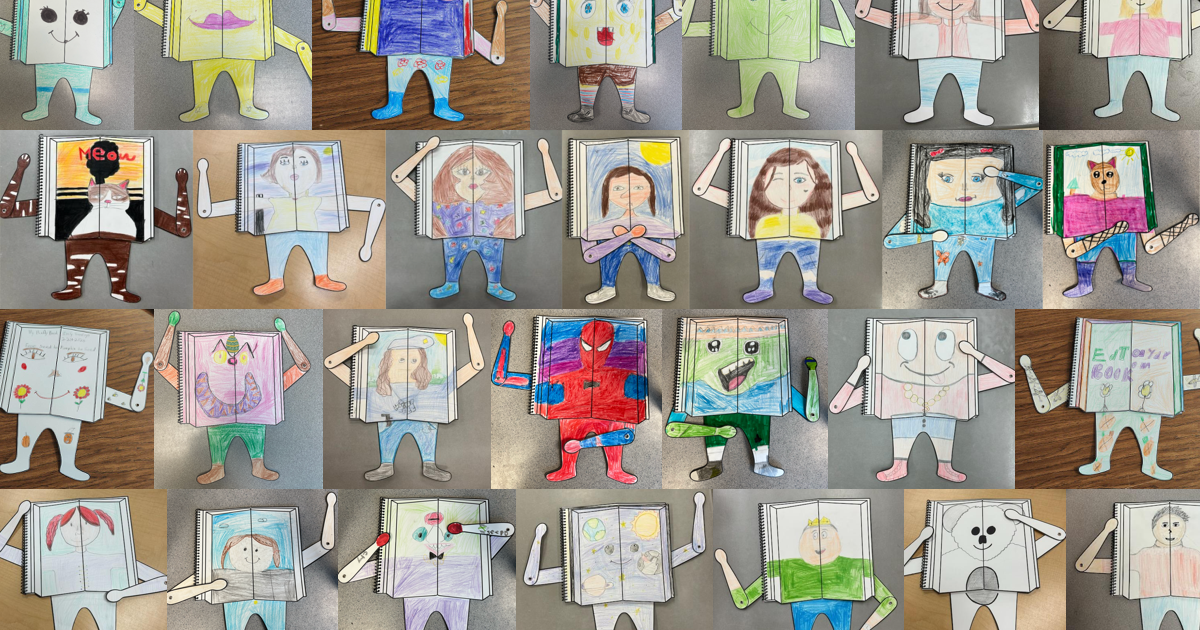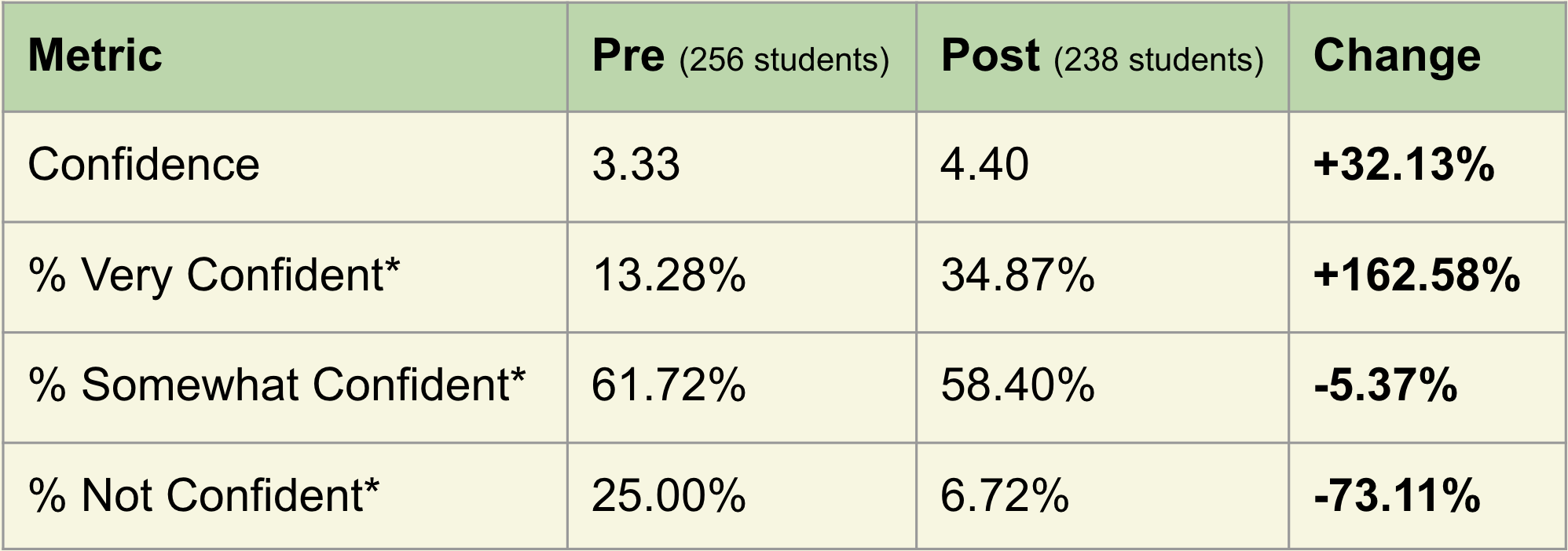By: Isaac Ost
An Effective Approach to K-5 Literacy Instruction
A simple and effective approach to K-5 literacy instruction is one that harnesses a student’s natural desire to share information in written form. When students have a genuine desire to write, they pursue reading and other learning and communication methods to assist them in translating their thoughts and feelings into written text. The more invested they are in their literary creations, or the idea of being an author, the more effective the learning process can become. This organic motivation can be established very early in a child’s mind, even before they may be able to read or write.
To reach these outcomes, students must first have a genuine desire to share information and should also see writing as a means to facilitate this process. This establishes a strong foundation for teachers to build from and allows them to maximize the effectiveness of their instruction. Although reaching this outcome can be exceptionally challenging, our innovative literacy solution is set to revolutionize the process, making it remarkably easier to achieve at scale for students in grades K-5.
Crafted Thought LLC offers an evidence-based elementary writing framework that targets student confidence, interest, and enjoyment in writing. Our framework integrates with any literacy curriculum to enhance the end-to-end writing experience while also empowering effective instruction in complementary areas of learning. It builds the foundation needed for students to organically become motivated to write and for teachers to optimize their existing instructional strategy for in-person, hybrid, and online learning.
Buddy the Book® Framework
Students are introduced to Buddy the Book® through a reading of our illustrated children’s book. Then they imagine themselves or another individual as a book and design their own “Book Character” using our online design application. These characters serve as the foundation for related texts that students publish using the physical Story Booklets we provide.
These writing projects should be connected to existing reading requirements and resources. Topics that have been learned in the classroom should be integrated into the texts that students write. This integrative approach to teaching becomes natural and effortless through use of our framework and is a result of the organic motivation students develop as they use our resources.
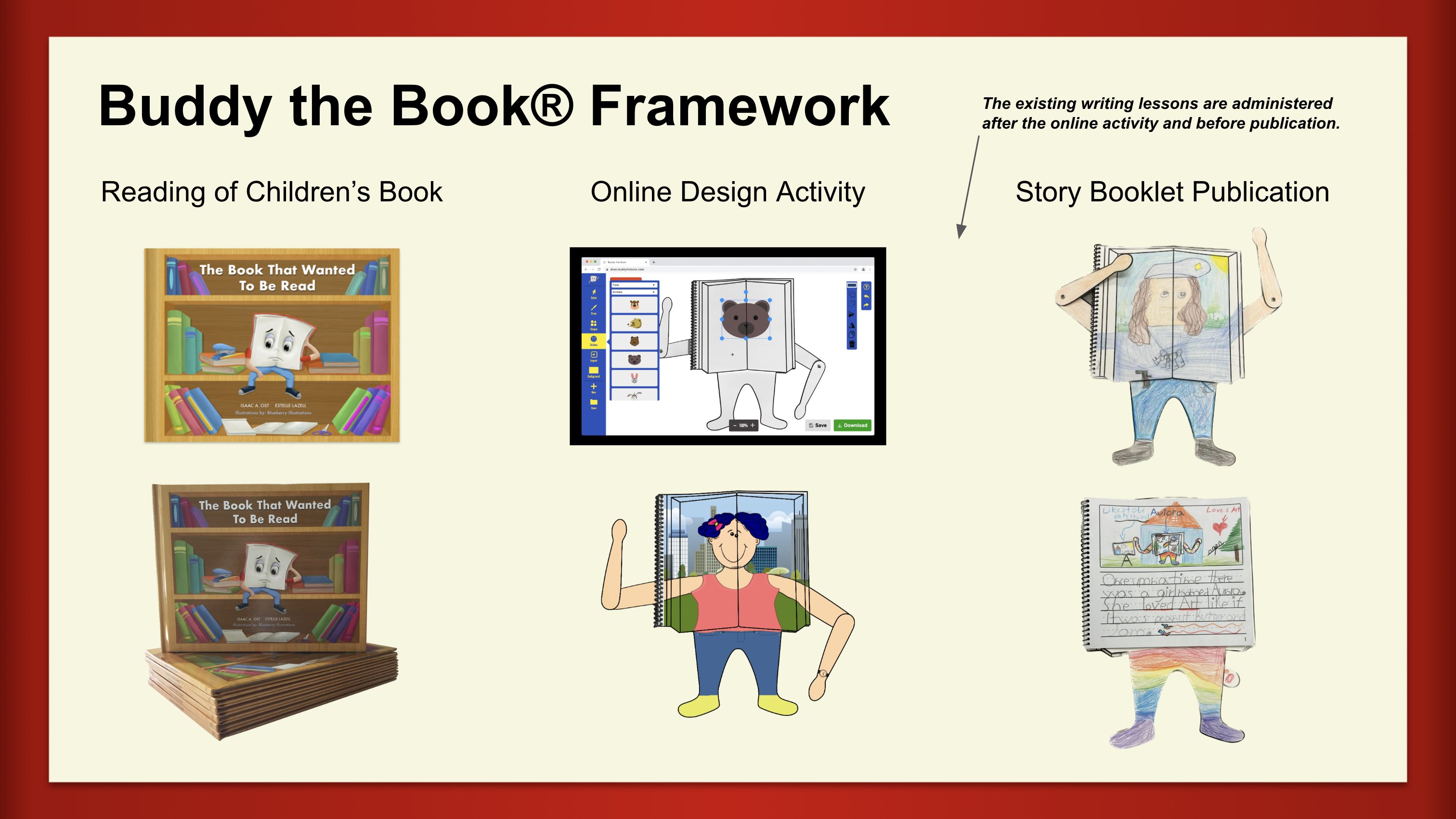
“Having the short book that I read, they were like, ‘Oh maybe someone is going to buy him!’… so they were really already engaged… So when I said, ‘What if now we design a Buddy the Book® character?’… they went crazy!” – Ms. Roma, 4th Grade ESL
“And then we created the Buddy character online and that really set it off. That was the foundation that really got them excited about writing. My kids absolutely loved that.” – Ms. Brown, 3rd Grade
“They loved it. They were even asking if they could have more booklets so they could do more of this.” – Ms. Guerra, 2nd Grade ESL
2023 Pilot Study
At the beginning of this year, we launched a pilot study to help us gather evidence of our solution’s effectiveness. We had 8 teachers with 289 students in grades 2-4 participate in this study. Our goal was to assess the impact of the Buddy the Book® Framework on students’ writing experience and its broader influence on literacy instruction.
More specifically, we set out to test whether the Buddy the Book® Framework would:
- Increase student interest in an upcoming writing opportunity;
- Boost student confidence in their writing abilities;
- Make the writing process more fun and relevant;
- Improve student engagement, information processing, and learning outcomes; and
- Enable more effective instruction and better alignment to curricula by teachers.
Participants
Below is a breakdown of the 8 teachers who participated in the study. An interesting thing to note is that 2 of these teachers had students write their texts in Spanish instead of English. Ms. Ubago had all of her students write in Spanish, while a portion of Ms. Roma’s students wrote theirs in Spanish.
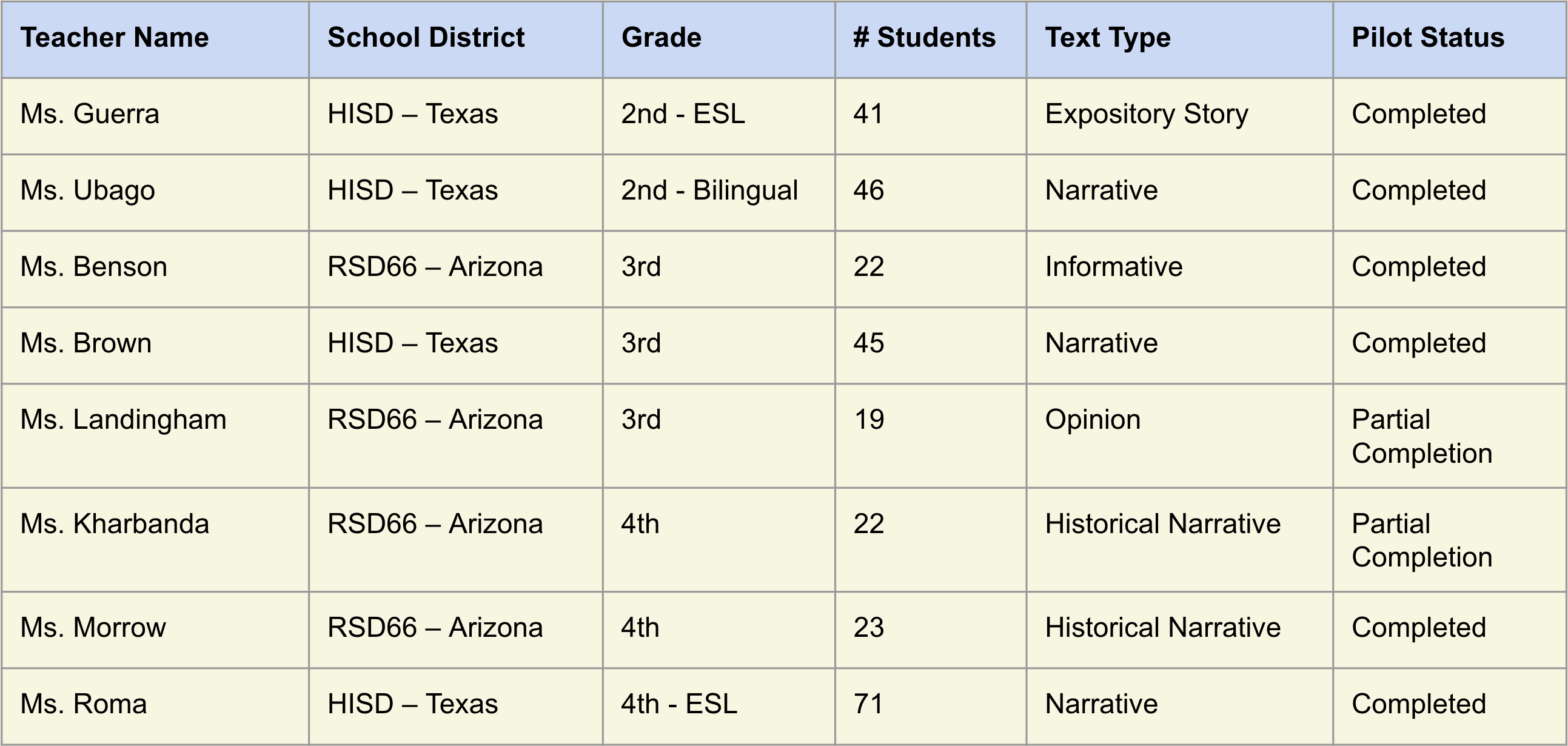
Methodology
A combination of surveys were administered to students at 3 stages; before knowledge of Buddy the Book and the upcoming project, after the online design activity but before the writing phase of our project, and after completion of the Story Booklets. Teachers also completed a survey before and after the project.
- Student Pre-Survey: This informed us of the students’ past experiences with writing in relation to confidence, interest, enjoyment, and relevance. It established benchmark data for analysis.
- Student Online Design Post-Survey: This was completed by students directly after the online design activity. It helped measure the impact of the activity on writing interest and students’ willingness and desire to share information in written form.
- Student Post-Survey: This provided insight on how the Buddy the Book® Framework influenced student confidence, enjoyment, and relevance.
Teachers also interviewed a total of 19 students. Students were asked about their experience, and this information was used to help supplement the survey data. At the end of the study, we interviewed the teachers to understand how the framework enabled more effective instruction and to hear more about the learning outcomes.
Pilot Study Results
Out of the 289 students, 278 completed the pre-survey (256 of these included the confidence metric) and 238 completed the full study. Factors that impacted these numbers included student absences and partial completion due to lack of communication from the teacher.
In the image below, the impact of the Buddy the Book® Framework is summarized based on the 3 stages of the writing experience that we have defined. Publication refers to students making their literary work available to be consumed by an audience (classmates, teacher, parents, etc.).
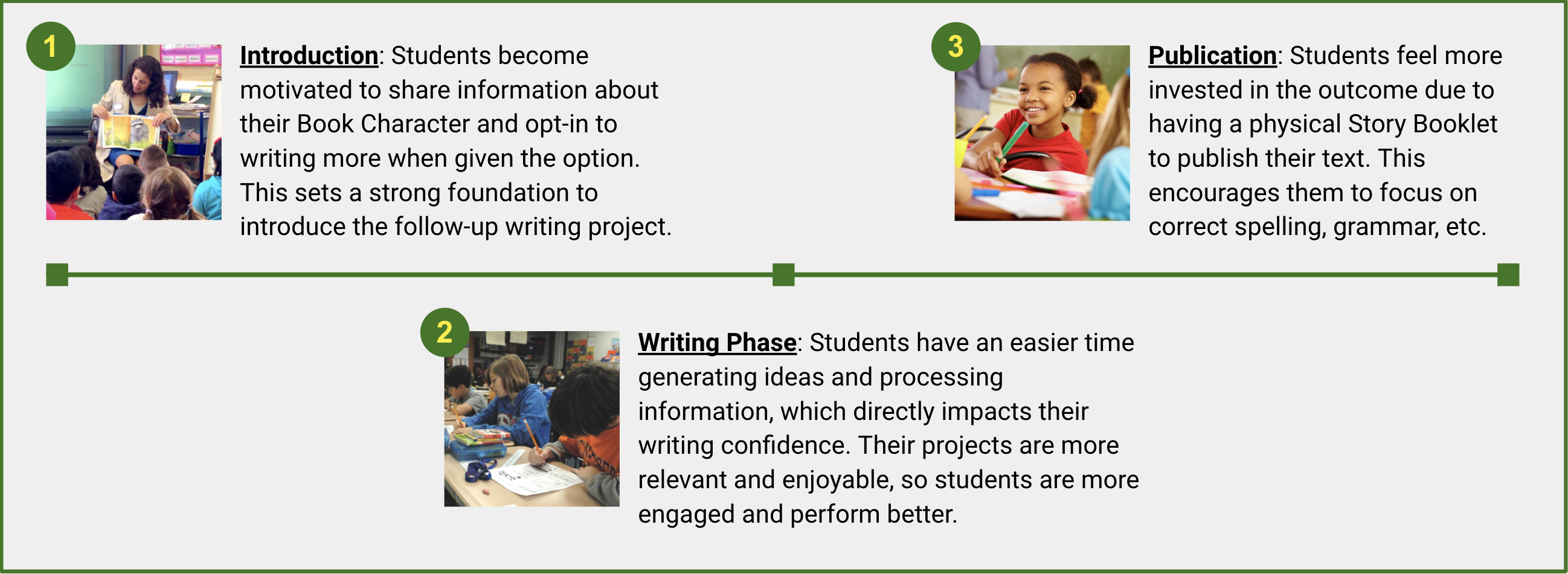
The combination of our unique IP, Buddy the Book®, our digital design application, and our custom writing booklets is what is necessary to successfully reach these outcomes at scale.
“A lot of the students built their character based on the text [textbook basal from curriculum], and that is what really motivated them to write… I am telling you, I think it’s Buddy the Book®. I am just being honest.” – Ms. Brown, 3rd Grade
Writing Interest & Willingness to Write
Motivating students to willingly share information about their Book Character starts with a highly engaging and enjoyable design activity. Our online design activity is created to appeal to even the most reluctant students. In fact, the average rating of this activity given by the 238 students that fully completed our study was a remarkable 9.43 out of 10.
We discovered several additional noteworthy facts about student writing interest and willingness to write, such as:
- Following the design of a digital “Book Character,” an overwhelming 88.35% of students expressed some desire to share additional information about their character.
- 83.08% of students willingly chose to write a short explanation of their character, even when it was not mandatory.
- 87.22% of students wanted to use a physical Story Booklet to produce a final literary work that had some relation to the character they designed.
- 76.29% of students who wanted to use a physical Story Booklet stated it was “Very important” to use correct spelling, grammar, and paragraph structure in their book.
“When I pulled out the booklets, they were like ‘So we are going to write a book!? Is it going to be ours? Can we take it home? Can I share it with my mom?’. They were so excited to actually be able to write a book.” – Ms. Roma, 4th Grade ESL
Students were then asked directly about the follow-up writing project and asked to rate their interest in beginning this project on a scale from 1 to 10. We compared these results to the results from the pre-survey to get the data shown in the table below. The ‘Relative Change‘ indicates the extent of change achieved relative to the maximum potential change. This provides a better picture of the true impact as it is balanced based on how much change was possible to be achieved.
Writing Interest Results
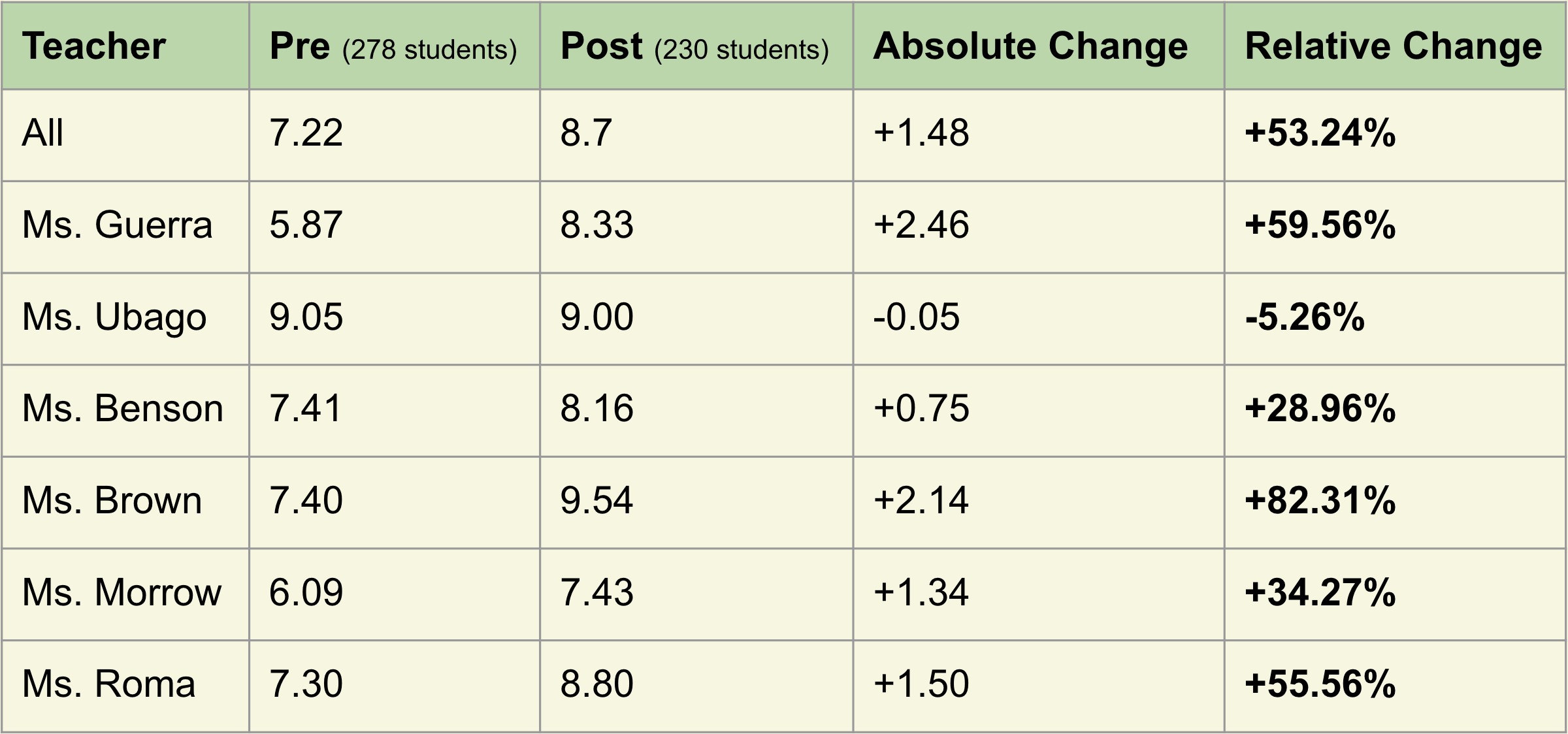
The data that we’ve presented demonstrates how our solution helps students build the foundation needed to inspire a genuine desire to write and to direct that writing towards an upcoming classroom project. However, this is only the first step. The writing process must also be fun and relevant.
Writing Enjoyment & Relevance
Educational experiences that are both fun and relevant lead to improved information processing and better long-term memory storage (Thanos et al., 1999; Chugani, 1998; Pawlak, Magarinos, Melchor, McEwan, & Strickland, 2003). This results in higher engagement, more effective learning, and improved outcomes. https://cdn2.psychologytoday.com/assets/attachments/4141/the-neuroscience-joyful-education-judy-willis-md.pdf.
In the student pre-survey, students were asked to rate their general enjoyment of writing on a scale from 1 to 10. Then they were asked to rate their enjoyment of just the writing portion of the Buddy the Book project. The results are displayed below.
Writing Enjoyment Results
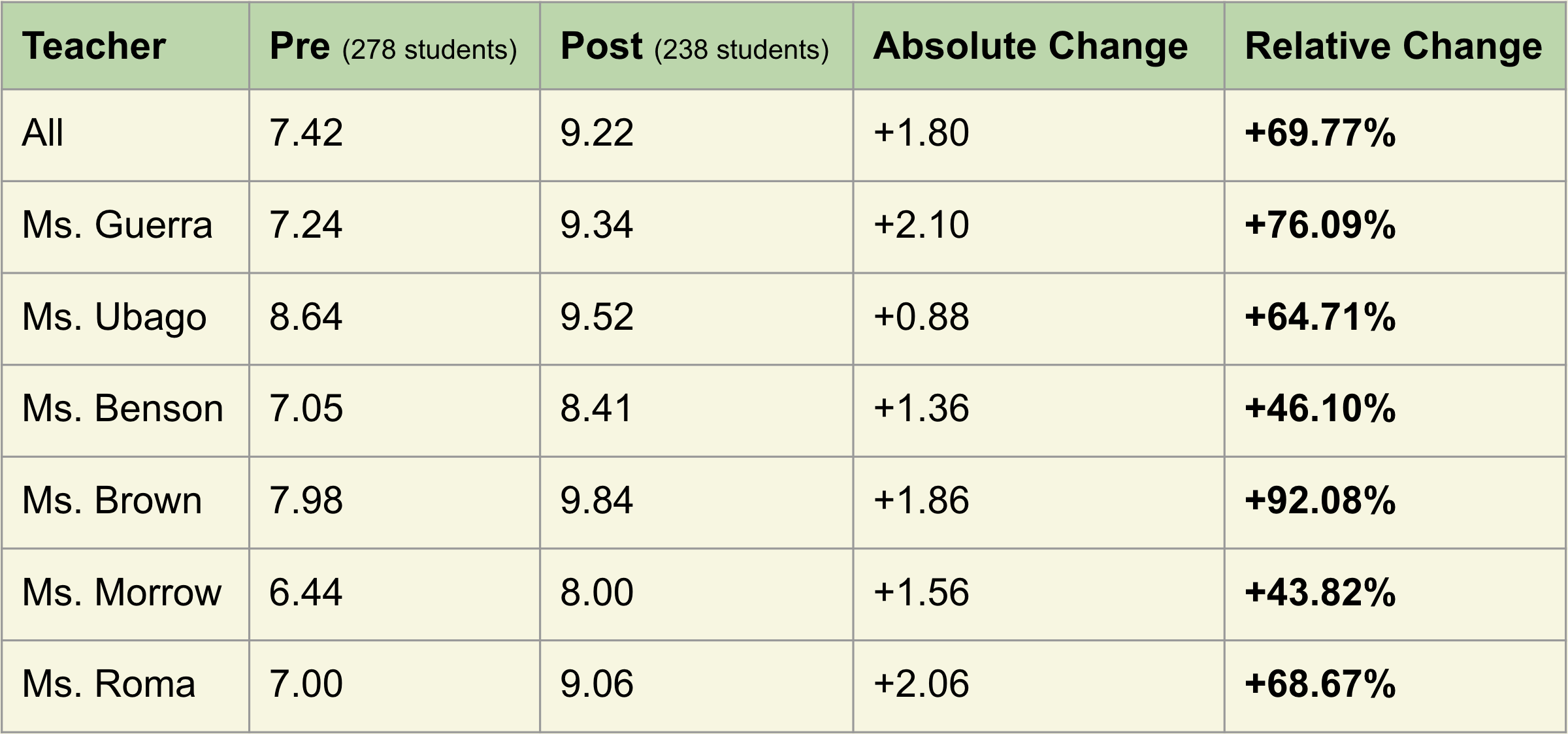
Students overwhelmingly enjoyed the writing portion of the project. The student interviews gave us deeper insight into this fact. Through interviews, we learned that the physical Story Booklet was a key component that enabled improvement of writing enjoyment at scale. Students felt invested in the final book project that the Story Booklet made possible. The booklets directly connecting to their characters reinforced the students’ organic interest to write about the characters they designed.
“On the cover I liked how we did… the drawing of our character… also what I liked the most is that they gave us the booklet of our character… and I also liked it when I finished the last page of my book.” – Wesly, 2nd Grade Bilingual Student
“It was awesome because I wanted to write my very own book.” – Noah, 2nd Grade ESL Student
Relevance
In the post-survey, students were asked if they could relate to their Book Character or the text that they wrote. Our results show that 80.25% of students reported they could.
“They shared it in front of the class… I switched the books of my afternoon class with my morning class and they were like, ‘I know who wrote this one!’ because somehow the characters they designed reflected their personalities as well.” – Ms. Guerra, 2nd Grade ESL
Writing Confidence
Before and after this project, students were asked if they could create a high-quality text with proper spelling, grammar, and paragraph structure. They could select “Yes”, “I think so”, “Maybe”, “Probably not”, or “No”.
We assigned a numerical value ranging from 0 to 6 in 1.5 quantity increments to each answer. A response of ‘No’ was assigned 0, ‘Probably not’ was assigned 1.5, ‘Maybe’ was assigned 3, and so forth. The results of these surveys are presented in the table below with all teachers grouped together.
Confidence Results (Grouped)
*The “Yes” option makes up the “Very Confident” category, the “I think so” and “Maybe” options make up the “Somewhat Confident” category, and the “Probably not” and “No” options make up the “Not Confident” category.
There was a significant increase in the number of students that were “Very Confident” and a large decrease in those that were “Not Confident”. This collective positive shift in confidence played a crucial role in motivating students to pursue the writing process. Even low-performing students experienced this shift in confidence and were just as engaged throughout the project as compared to high-performing students. Below is a breakdown of the average change in student confidence for each teacher.
Confidence Results (By Teacher)
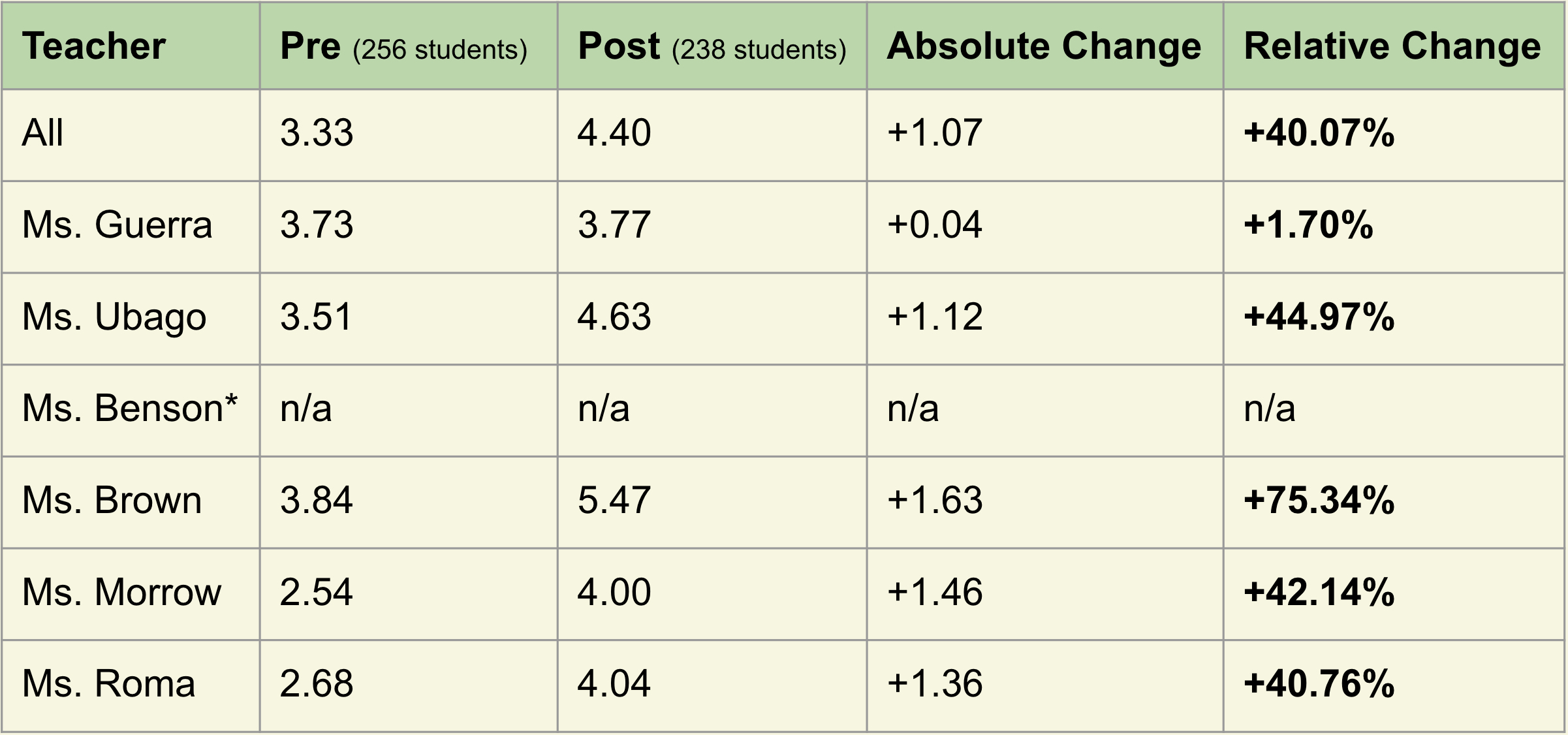
*Ms. Benson administered her pre-survey before the confidence metric was added.
A number of factors impacted student confidence, but we learned from the interviews that creativity played a large role. Students felt more creative and could more easily come up with ideas to write about due to having their book character for inspiration. In fact, 60.92% of students reported that it was easier to come up with ideas because they had their character to reference.
“When I made the buddy book online it made me more confident because I got creative… When I am creative I get a little more confident.” – Emily, 3rd Grade Student
“My creativity helped me be more confident… because I can write more and have more ideas.” – Andrew, 2nd Grade Bilingual Student
[Translated from Spanish] “When I think of ideas, it’s helping me to write and think at the same time very well… I was faster in doing the project.” – Gael, 2nd Grade Bilingual Student
Another key factor that impacted confidence was that students experienced an improved ability to process information. They understood concepts clearer and were significantly more independent during the writing process than in the past.
Student Engagement
Students were highly engaged throughout the entire end-to-end experience. This was a result of successfully improving student interest, confidence, enjoyment, and relevance of the writing experience. Students also processed information in an improved manner, which enabled them to write and learn more efficiently and as a result boosted their engagement even further. This is best reflected in direct quotes from the teacher interviews that we conducted.
“The kids were amazed… I was kind of shocked that they really really opened up to it… Much more engagement… Everyone had their character, and they were all thinking of ideas and using that to help their writing.” – Ms. Brown, 3rd Grade
“When they saw the online activity… they were like ‘I want to start right now. I want to discover it on my own.’… They were the ones helping each other and were so engaged in the activity.” – Ms. Ubago, 2nd Grade Bilingual
“I was surprised that they were able to do it… In other activities they are telling me ‘I’m unable’ because they don’t want to do it. In this activity they were in silence writing. They didn’t ask almost anything… They were asking some ideas but other than that they were able to do this on their own, so I was really surprised.” – Ms. Ubago
“I gave them a theme… and they were so excited and they were so into it… They were looking at their classmates’ work.” – Ms. Guerra, 2nd Grade ESL
“What I noticed is that the same activity and the same things I did with the high group I could do with the low group, and they were super engaged… They were actually asking questions or asking for help… They were cooperating and engaging with the activity. That is what surprised me the most; the low group was as engaged as the ones who are always engaged.” – Ms. Roma, 4th Grade ESL
“One girl told me, ‘Now I know I can become an author.’… It really got their attention and now they know they are able to do that.” – Ms. Roma
Curriculum Alignment & Learning Outcomes
The positive impact that students experienced built a strong foundation for teachers to work from. Teachers had a much easier time aligning their instruction to state standards, as well as implementing previously learned topics into the project. Some teachers were even able to satisfy non-literacy requirements, such as requirements in STEAM, Social Studies, and History. All of this led to improved outcomes that were clearly noticeable and measurable by teachers.
“We had been working on topics related to characters, setting, beginning, middle and end, problem and solution… I gave them a template to map their stories… That really connected to my lessons that I have been teaching in reading.” – Ms. Ubago, 2nd Grade Bilingual
“When I was going through the process I was throwing in those mini lessons… so bringing in those quick reminders about the skills that we covered, it helped them to be able to focus a little bit more.” – Ms. Brown, 3rd Grade
“If I take the test they did for state testing, and I check the story they wrote, I am sure that what we learned with the Buddy the Book® is beyond what they knew before. Now they know how to structure a whole story, they know how a plot works, and how to organize it also.” – Ms. Roma, 4th Grade ESL
“All the students did a beginning, middle, and end. Even some of them went beyond my expectations and added a theme and a moral of the story… They actually learned and integrated in their brains the whole structure and went beyond… They kind of connected the reading with the writing, which is something that has been very difficult for me to connect both subjects.” – Ms. Roma
“In the past when I would make them write… they would just be giving me a few sentences… When I followed the process that you have given, they were able to write more… their sentences and paragraphs were more detailed… Their sentences were longer and more clear.” – Ms. Guerra, 2nd Grade ESL
“Their handwriting is way better compared to their handwriting from the previous essay that we did in school.” – Ms. Guerra
What We Learned
The pilot study served a dual purpose: validation of our solution and identification of areas for further improvement. Through this process, we gained valuable insights and data and are currently using this information to refine our solution to better address student and teacher challenges.
We are using this data to support the implementation of this model in various school settings, while separately continuing to develop our larger K-5 SaaS solution. Our commercial SaaS solution is being built upon an enhanced model, specifically designed to guide students on a transformative journey that culminates in their achievement as published authors by the end of 5th grade. To help us continue to refine this model, we are asking for K-5 educators to apply to help with the final stages of our testing. Please fill out our Intake Form if you are an interested educator (teacher, admin, etc.).
